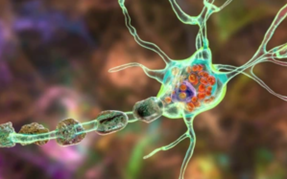Treatment of lysosomal storage diseases

Tech ID
22-056
Inventors
S. Igdoura
F. Weaver
R. Austin
C. Nurse
Patent Status
US patent filed
Stage of Research
Proof of concept and preclinical data available
Contact
Amy Hector
Business Development Manager
Abstract
Lysosomal storage diseases, such as Tay Sachs and Sandhoff disease, result from genetic mutations and can cause severe neurodegeneration in the central nervous system [1]. Although these diseases are rare, with a prevalence of approximately 1 in 100,000 [2], patients may experience severe neurological impairment and early death (infantile/juvenile forms) or delayed cognitive and speech impairments, ataxia, and lower motor neuron disease (later-onset from) [1]. Current treatments are substrate reduction therapy or enzyme replacement treatments [3]. Both treatment options have shown limited efficacy and require further research for treatment of Tay Sachs and Sandhoff disease.
Researchers at McMaster University have discovered that a repurposed FDA-approved drug is an effective treatment against Sandhoff disease in mice models. Treated mice had an increased life span and reduced muscle atrophy compared to control.
Applications
- Treating Tay Sachs and Sandhoff disease.
Advantagess
- Targets a unique pathway compared to other therapeutic methods.
- Can be paired with additional substrate reduction drugs or enzyme replacement treatments
References
- Sun, A., Chang, I. J., Lam, C., & Berry, G. T. (2021). Lysosomal Storage Disorders. In Emery and Rimoin’s Principles and Practice of Medical Genetics and Genomics (pp. 563-682). Academic Press.
- Xiao C, Tifft C, Toro C. Sandhoff Disease. 2022 Apr 14. In: Adam MP, Everman DB, Mirzaa GM, et al., editors. GeneReviews® [Internet]. Seattle (WA): University of Washington, Seattle; 1993-2023. Available from: https://www.ncbi.nlm.nih.gov/books/NBK579484/
- Solovyeva VV, Shaimardanova AA, Chulpanova DS, Kitaeva KV, Chakrabarti L and Rizvanov AA (2018) New Approaches to Tay-Sachs Disease Therapy. Front. Physiol. 9:1663. doi: 10.3389/fphys.2018.01663
Image obtained from: https://www.shutterstock.com/image-illustration/brain-neurons-lysosomal-storage-diseases-taysachs-2053861109

